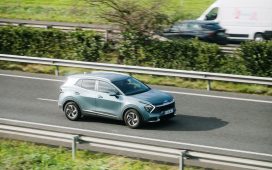Pedestrians are more likely to be hit by an electric or hybrid vehicle, a new study has found.
An analysis of road traffic accidents found electric vehicles in towns and cities are more likely to be involved in a crash with a person.
Analysis of 32 billiong miles of battery-powered car travel and three trillion miles of petrol and diesel cars showed that, mile-for-mile, electric and hybrids are twice as likely to strike a pedestrian.
Why more eco-friendly cars are considered more dangerous is unclear, but experts say there could be a number of issues that mean drivers are more at risk
The experts believe electric car owners are generally younger, which could be a reason for the spike, while the vehicles are much quieter and harder to hear.
Phil Edwards, first author on the study and professor of epidemiology and statistics at the London School of Hygiene & Tropical Medicine told the Guardian: “They are much quieter than the old-fashioned cars, and pedestrians have learned to navigate roads by listening for traffic.
“Drivers of these vehicles need to be extra cautious.”
Collisions are the leading cause of death among young people and children. Pedestrians make up a quarter of all deaths on the road in England and Wales.
Meanwhile a 2017 US Department of Transportation report found electric and hybrid cars posed a 20 percent higher risk to pedestrians than petrol and diesel.
The study looking at crashes examined between 2013 and 2017. The analysis looked at 916,713 casualties of which 120,197 were pedestrians.
More than 96,000 had been hit by a car or taxi.
A majority of vehicles on the road are powered by petrol and diesel, thiese were 75 percent of collisions.
But for the same distance travelled, battery-powered vehicles were more dangerous.
The average annual pedestrian casualty rate per 100m miles travelled was 5.16 for electric and hybrid cars compared with 2.4 for petrol and diesel cars, according to the study in the Journal of Epidemiology and Community Health.
In rural settings, battered-powered vehicles were no more dangerous statistically than petrol or diesel, but in towns and cities they were three times more likely to collide with pedestrians.
Hybrid and electric vehicles in Europe have required acoustic vehicle alerting systems since 2019. But there are still thousands without them fitted.
“If government made sure these systems were installed in all electric vehicles and retrofitted them to older electric cars, that would be a good start,” Edwards said, adding that the Green Cross Code also “probably needs updating”.
Hearing difficulty isn’t the only issue facing pedestrians either. Electric cars tend to be heavier and have longer stopping distances than petrol versions.
“If the government is planning to promote a transition to electric cars, then that will bring some risk to pedestrians unless we take care of this,” said Edwards.











